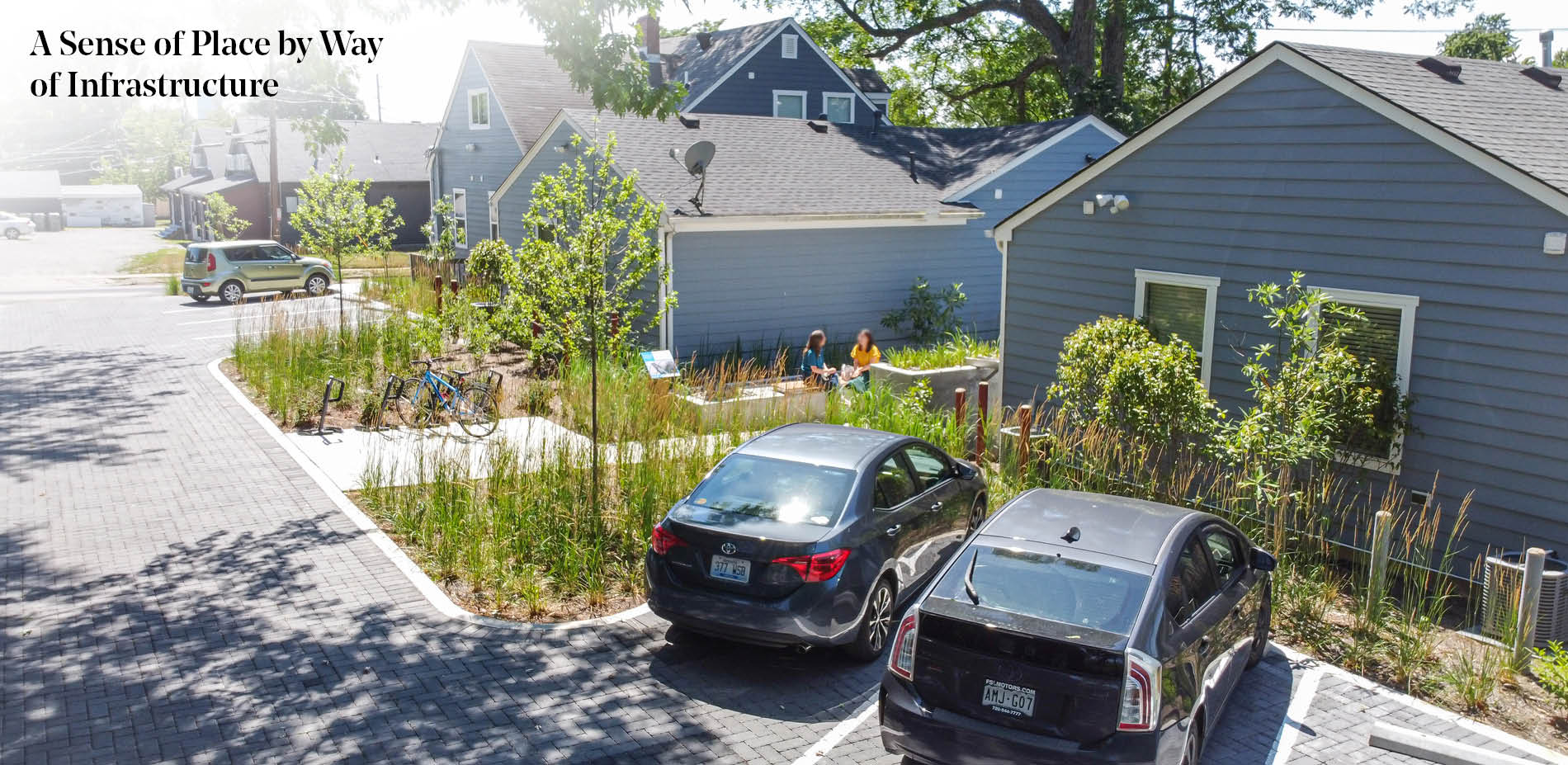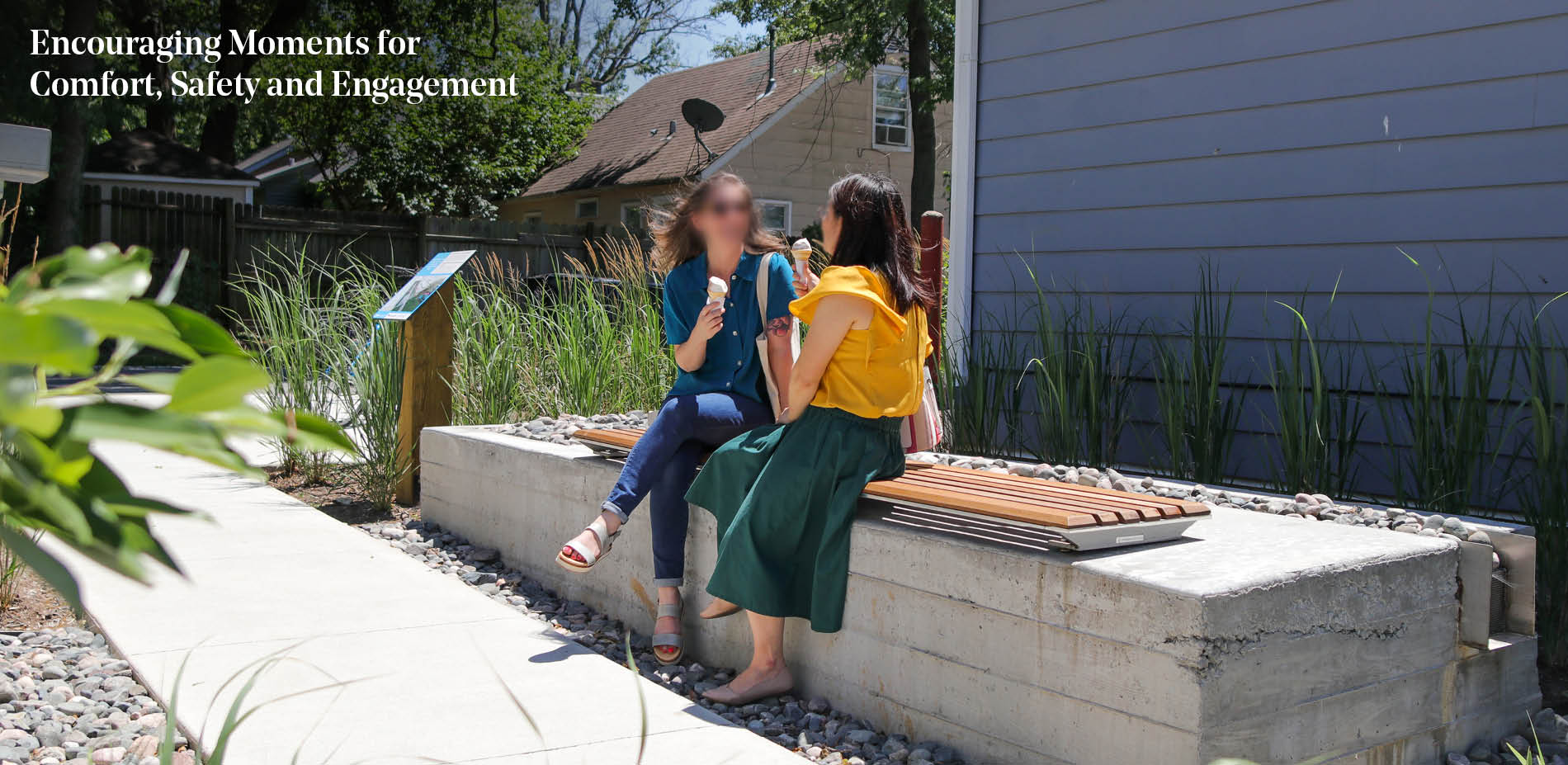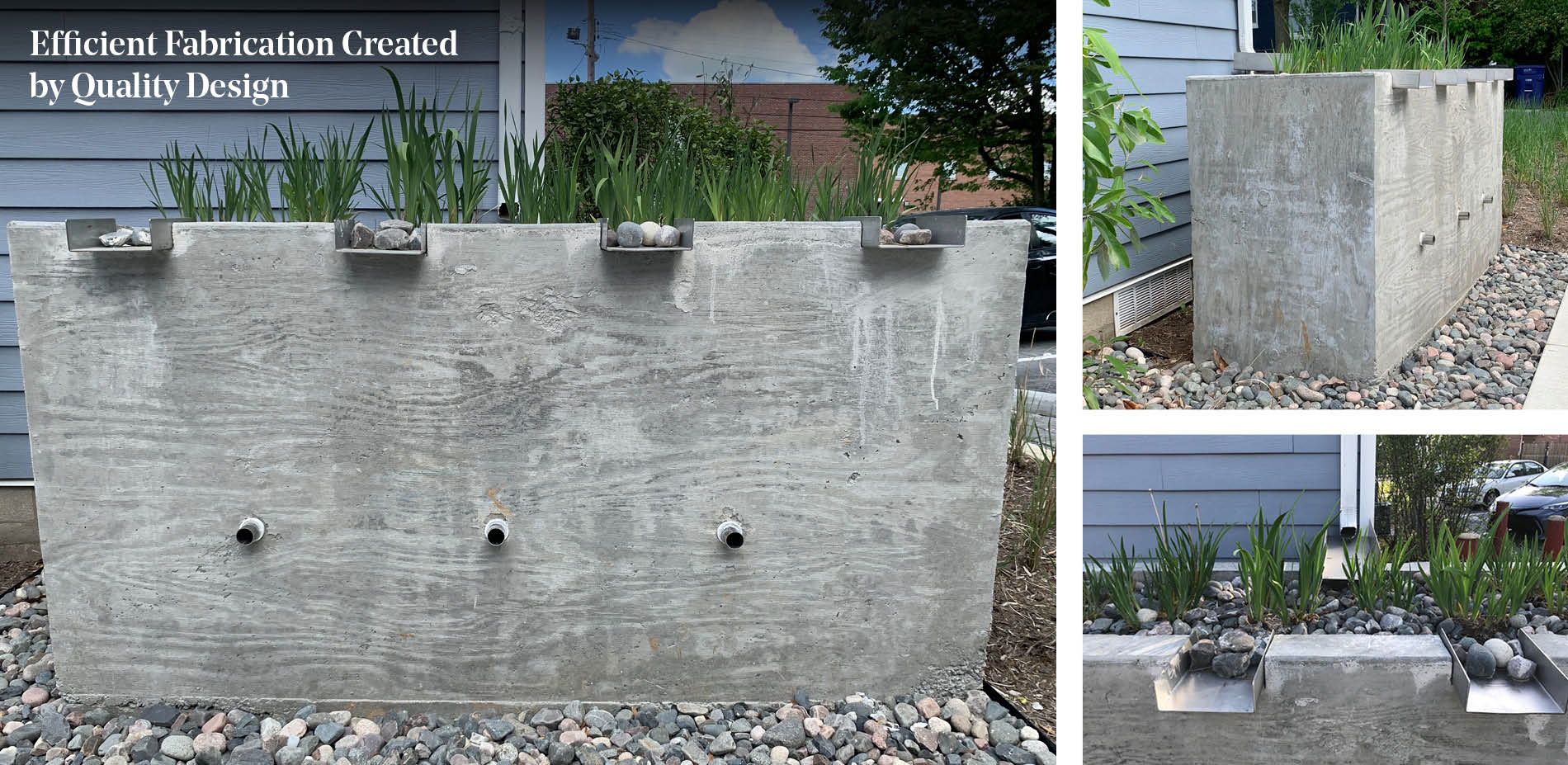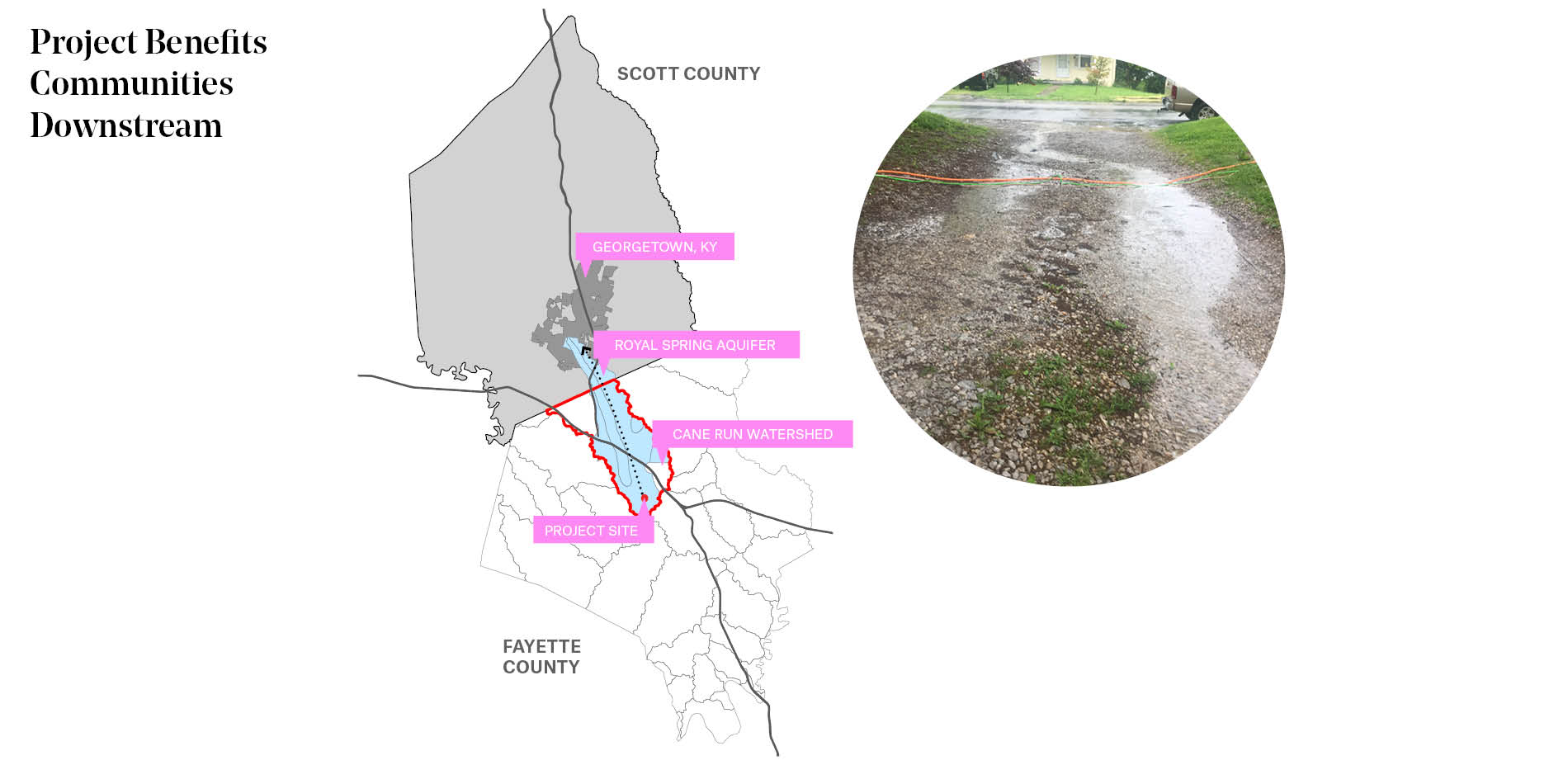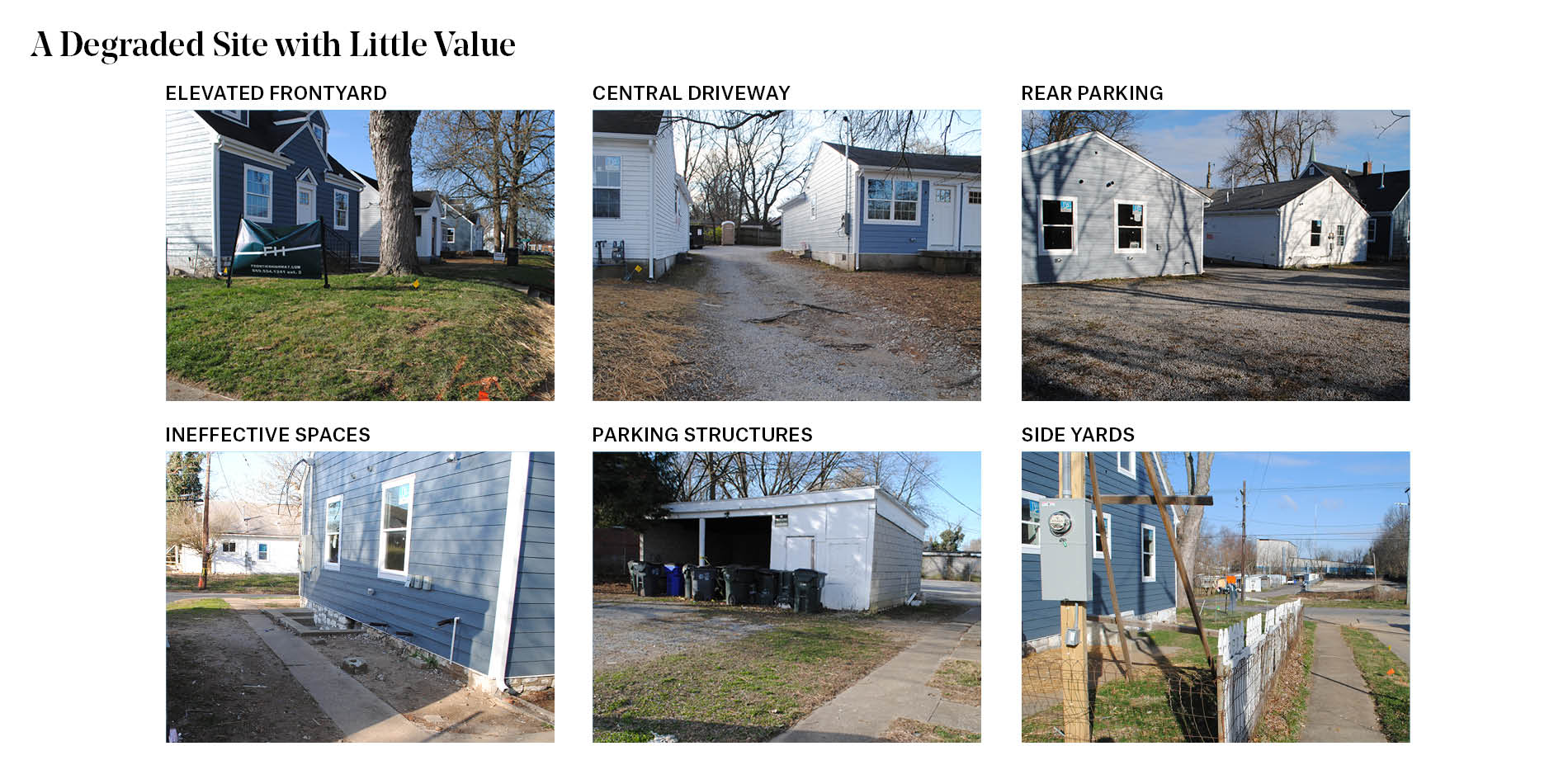The Rain Gardens at 900 Block
Award of Excellence
Residential Design
Lexington, Kentucky, United States
Gresham Smith
Client: Frontier Highway
This project is a model for how to powerfully impact our communities with modest budgets and elegant design. Small but powerful!
- 2023 Awards Jury
Project Credits
Landscape Workshop, Contractor
Louis Johnson, ASLA; Patrick Henry, ASLA; Erin Masterson, ASLA; Jared Kaelin, ASLA, Gresham Smith Landscape Architects
Project Statement
The Rain Gardens at 900 Block is award-worthy because:
- The design approach resulted in an immersive green infrastructure experience, a true rain “garden.”
- The entrant secured grant funds to invest in the property while advocating for improving urban ecologies and stormwater systems on a larger scale.
- The entrant took a triple-bottom-line approach for stormwater retrofits to benefit the community beyond the property lines.
- The entrant greened the site with native plants and minimized maintenance. The utilization of incentive grant dollars to improve stormwater functionality, site value and social spaces showcase how to creatively implement high-quality sustainability and resiliency-focused landscapes even at small scales.
Project Narrative
The Rain Gardens at 900 Block is the result of years of collaboration with the property owner to strategically pursue local grant funding to set a new standard for immersive Low Impact Development (LID) installations. The 900 Block is in the Cane Run Watershed and drains towards Georgetown, Kentucky, impacting the town’s water source. Located across the street from an elementary school with a significant walk-up population, this property contributed to flooding issues and multi-modal safety issues due to drainage. The property is 0.5 acres and was 70% impervious with unusable open spaces. The project team identified 900 Block as a strong candidate for the city’s Stormwater Incentive Program, a grant that encourages property owners to invest in LID on their property. With a commitment to sustainable and resilient design, the team approached the client about applying for the public grant, showcasing how they could invest in the property site itself, while also benefitting the city of Lexington on a larger scale. The project leveraged public grant funding to address the client’s issues while advocating a larger agenda for improving urban ecologies and stormwater systems. Ultimately, the entrant secured grant funding to retrofit the site to filter stormwater and reduce flooding, while also enriching the space with native plants, social spaces and educational signage. The project aligns heavily with the SITES criteria, however, given that it is funded by local grant dollars, the budget would not support the accreditation program. The project is a model for the city for how to creatively implement high-quality and resiliency-focused landscapes. Unique and defining features include: Immersive Green Infrastructure: While resilient infrastructure was a top priority, the design vision imagined green infrastructure as an immersive landscape experience, a true rain “garden.” This placemaking approach to stormwater infrastructure is showcased with the use of custom bio-planters and native plantings along the water walk. Public Education: The team designed bilingual interpretive signage explaining the project and its benefits as well as curated a public walking tour of other stormwater grant projects in the area. The team also developed a maintenance manual for the owner, handing off the project to their crew to maintain it long-term. Cost-Efficient Design: Leveraging public funding by way of a local grant program meant the project team had to develop an economical design. The construction costs associated with the green infrastructure significantly contributed to the overall cost. Using resourceful materials like poured-in-place concrete and smaller landscape plugs allowed the final project to be cost-efficient and still achieve the goals set by the design team. Native Landscapes: Native landscape materials were prioritized and the plant palate carefully considered species that maintained seasonal interest with form, flower and color. Additionally, the team developed a landscape plan and palate that used massing’s and order to create a composed, controlled and easy-to-maintain landscape. The team planned for minimal maintenance and no irrigation, selecting native species that are hardy to extreme conditions. 900 Block showcases how the team’s strategies to retrofit the existing residential site increased the property value for the community, owner and tenants with sustainable, interactive and beautiful landscapes, even at a small scale.
Products
-
Furniture
- Bench top: Knight Seat by Forms + Surfaces
- Bick Rack: Varsity Campus Bike Dock
-
Hardscape
- Pervious Pavers: Belgard Permeable Concrete Pavers
Plant List
- Autumn Brilliance Serviceberry
- Eastern Redbud Multi-trunk
- Appalachian Snow Dogwood
- Sweet Bay Magnolia
- Black Gum
- Hummingbird Summersweet
- Artic Fire Red Twig Dogwood
- St. John's Wort
- Henry's Garnet Sweetspire
- Winterthur Viburnum
- Arkansas Bluestar
- Swamp Milkweed
- Feaher Reed Grass
- No Mow Fescue
- Autum Bride Hairy Alumroot
- Blue Flag
- Lemon Bee Balm
- Switch Grass






